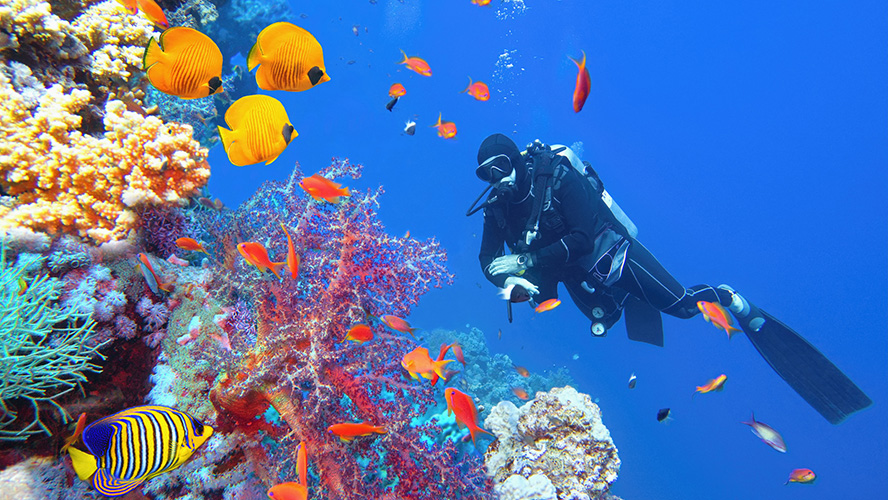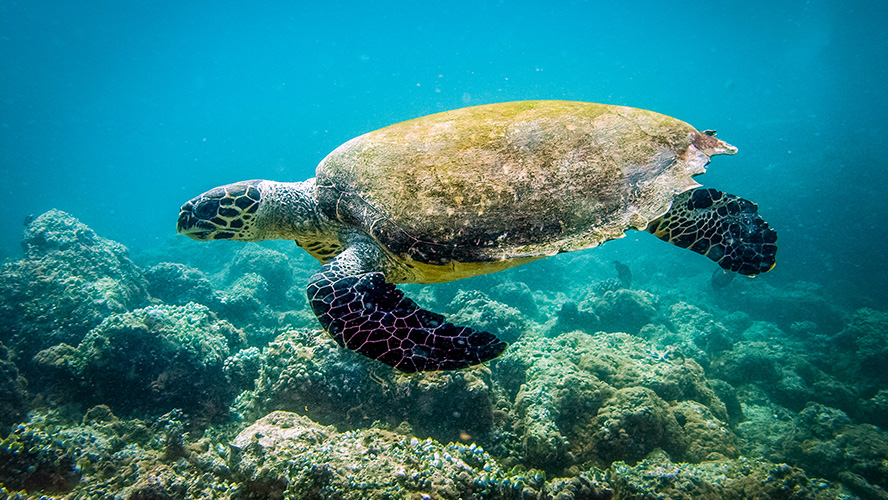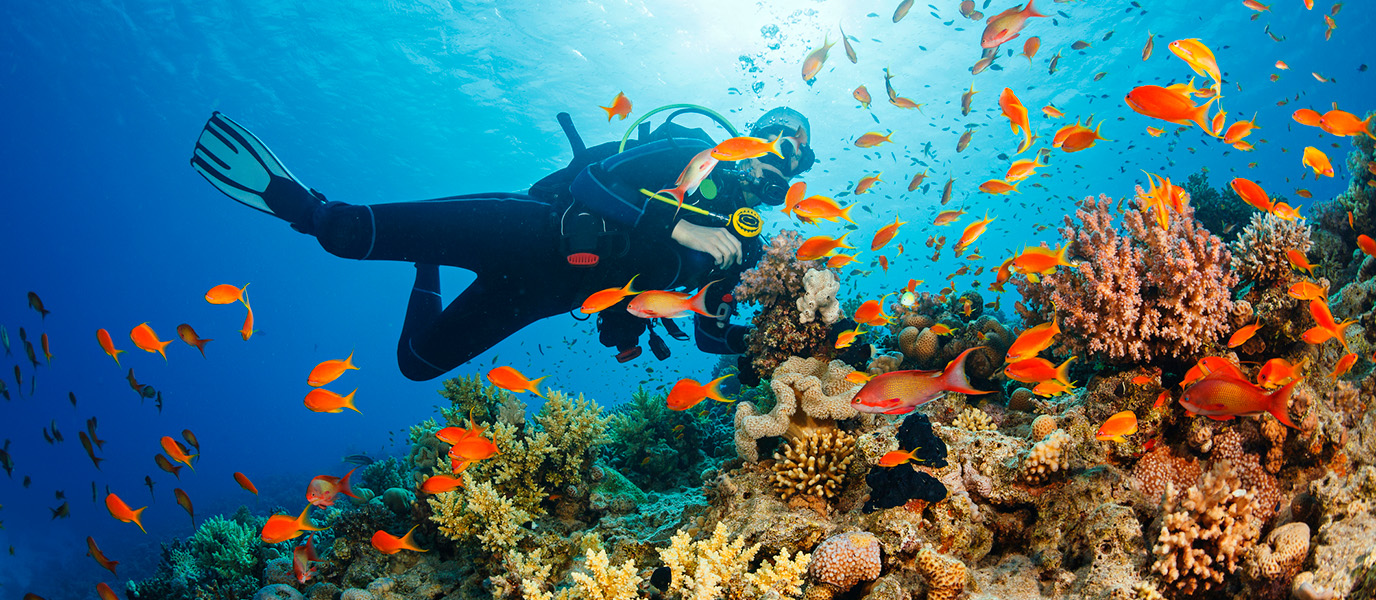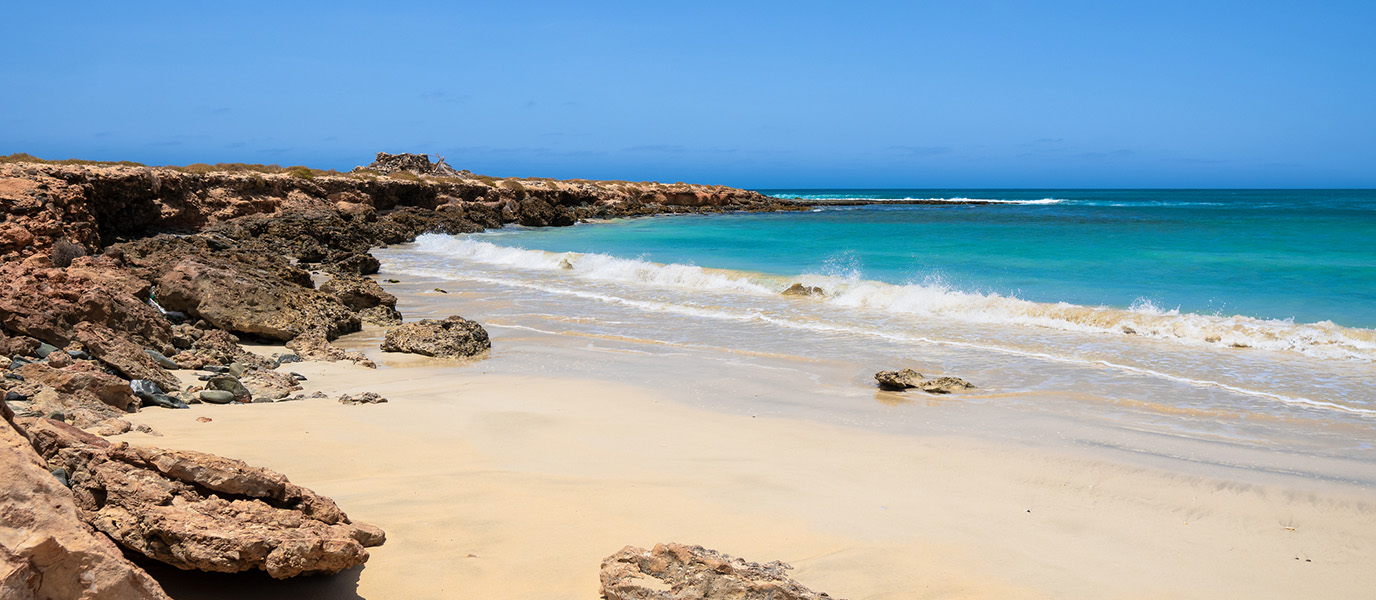The crystal-clear waters of Cape Verde, an archipelago in the Atlantic Ocean, offer an unparalleled location for diving enthusiasts. Its islands, known for their contrasting landscapes on the surface, hide an underwater world full of life, colours and surprises. Cape Verde has gained a growing reputation as a diving destination thanks to its marine biodiversity, fascinating shipwrecks and excellent conditions throughout most of the year. Not only does it stand out for the quality of its diving, but also for the wide range of experiences on offer. From majestic underwater volcanic formations to the opportunity to swim alongside sharks and sea turtles—something very unusual in other places—every dive becomes a unique adventure. In addition, its geographical location makes the archipelago a crossroads between tropical waters and the more temperate waters of the Atlantic, creating a special mix of marine species that can hardly be found elsewhere in the world.
Cape Verde, a perfect destination for diving enthusiasts
Thanks to its year-round stable climate, Cape Verde is an ideal destination to go diving at any time of the year. The warm and clear waters allow you to explore the deepest spots without major seasonal changes. The water temperature varies between 22°C and 27°C, making it a comfortable place for both experienced divers and beginners.
The main advantage of diving in Cape Verde lies in the diversity of its underwater landscapes. In the depths, divers can find volcanic caves, canyons and coral reefs, along with a rich biodiversity that includes tropical fish, manta rays and barracudas. The ocean currents, although moderate in some areas, attract pelagic species, give you the chance to enjoy unexpected encounters with dolphins, whale sharks and even humpback whales at certain times of the year.
Also, being a less crowded destination than other diving paradises in the world, Cape Verde’s waters radiate a sense of pristine calm that allows you to explore with very few divers around. Each island in the archipelago offers something different, from colourful coral-covered volcanic walls to shipwrecks, so there’s always something new to discover.
The best places to dive in Cape Verde: shipwrecks, underwater caves and unexpected encounters on the islands of Sal, Boa Vista and Santo Antão
Cape Verde is made up of ten main islands, and while all offer some unique experiences, some offer the best diving destinations in the archipelago. Sal and Boa Vista are two of the most popular islands for divers. Both have a well-developed infrastructure of diving centres and offer a wide variety of dive sites for beginners and experts alike.
On the island of Sal, volcanic rock formations create fascinating caves and tunnels that can be explored at different depths. The clear waters and gentle currents make it an ideal place to start diving. One of the best-known sites is the wreck of Santo Antão, a ship that sank off the coast that is now home to a huge variety of marine life.

Boa Vista, known for its endless white sandy beaches, also offers spectacular dive sites. Cabo Santa Maria is a famous dive site where divers can explore the remains of a sunken ship surrounded by large schools of fish. In addition, manta rays and sharks are a common sight in this area, something which adds a special thrill to every dive.
Another island worth mentioning is Santo Antão, whose more remote waters offer underwater landscapes that are rarely explored but teeming with wildlife. There are underwater caves and rock walls that drop steeply into the abyss, creating a breathtaking environment for diving. Santo Antão, which is not so touristy, offers a more rugged and less crowded experience, ideal for those looking for quieter and more secluded dives.
What to see when diving in Cape Verde: encounters with small and (very) large species
Cape Verde’s seabed is a treasure trove of surprises. The mix of tropical and Atlantic waters fosters exceptional biodiversity that always amazes divers. Tropical fish such as angelfish and butterfly fish swim alongside barracudas, manta rays and large schools of silver fish moving in perfect harmony.
In addition to the usual marine life, Cape Verde is famous for its sightings of larger species. During dives, it is not uncommon to come across sea turtles swimming lazily along the reef, while manta rays, with their graceful movements, glide through the deeper waters. At certain points on the islands, whale sharks, gentle giants of the sea, make an appearance during their migrations.

The waters also hide a fascinating variety of shipwrecks, such as those mentioned at Sal and Boa Vista, which not only offer a glimpse into the past, but have also become genuine ecosystems, with corals and anemones now covering their remains and attracting a myriad of species. For the more adventurous, there are deeper dive sites where it is possible to spot sharks, including species of hammerhead sharks, making Cape Verde one of the few places in the Atlantic where they can be seen fairly regularly.



















































































